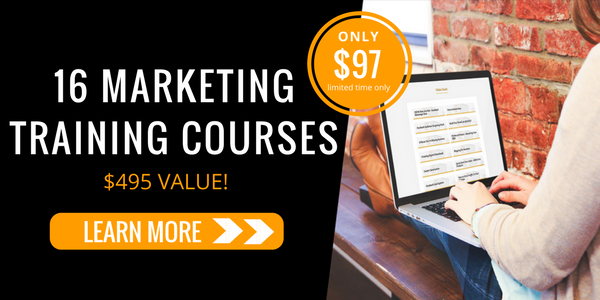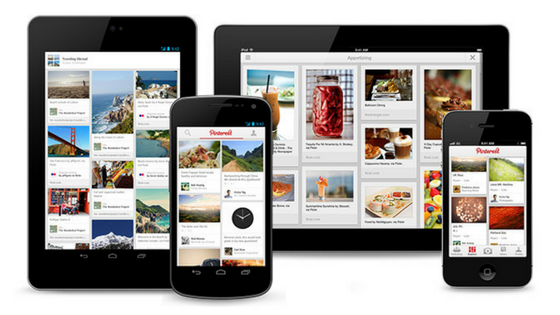How to Emotionally Hook Visitors to Stay on Your Website Longer
What if you could hijack your reader’s brain? What if as readers come to your website, you grab their senses, emotions, perception, and everything else. You simply turn your readers into your slaves. Okay, I’m exaggerating. My friend, don’t even try to turn your lovely audience into slaves. It’s inhuman.
However, you always want to hold your readers on the website longer, and it’s justified. Here I’ll talk about strategies, which will not only reduce your website’s bounce rate but help you to make a strong connection with your readers. Let’s see how we can do that.
Stories – Capturing Senses
“Marketing is no longer about the stuff that you make, but about the stories you tell.” – Seth Godin
Stories always fascinate humans. They have the power to hypnotize a human’s brain and keep it engaged for hours. You can see people who say they’re unfocused spend hours focusing on the movie screen. That’s the magic of a story that builds a connection so strong that it captivates the attention. We have plenty of studies to prove that stories are irresistible. A story can make you happy, bring tears to your eyes, change your perception and behavior, and sometimes turn around your whole life. The only question is can stories make such a powerful impact on the business world? To check this, Groove did an experiment where they published one post in two different versions. One started with a story and another without any story. They found the story version received 300% more traffic. And more and more people scrolled all the way to the bottom and average time on page went up to five times higher for the story version. Stories are always a great tool to capture your reader’s interest. The better you tell your story, the more you can engage your reader. No, you don’t need to write something extraordinary. A small incident of your life, something you observed, or something you’ve learned will do the job. Jon Morrow, for instance, uses this skill brilliantly in his blog posts. He captivates his audience’s senses from the start and keeps them engaged till the end. Comments on his blog prove that his readers go all the way to the bottom of his posts. Things you need to remember while telling stories:
– Telling stories is a skill. It’s a double-edged sword and may hurt you if handled without care. Take it carefully and do not tell vague, bland, unnecessary stories.
– Keep your stories short and sweet. Long and complicated stories will push your audience away.
Related: Effective Call to Action Tips to Boost Your Conversion Rate
Creating a Trap – The Element of Greed
“You and I probably wouldn’t be here if our ancestors hadn’t been greedy savages.” – Mark Pagel
What do you expect from your readers when they finish up with a post? You want them to read another, and another, and another post after. In secret, you want to build a strong connection with your readers and eventually turn them into paying customers. The question is what do you do to make it happen. Every corner of every single page of your website is crucial. You must use every opportunity to hold your audience and keep them engaged. Let’s say when your reader finishes the post, you show another similar post, give away a freebie, or offer some irresistible deal right below the post. You may have seen many popular blogs implementing the same strategy. Another way is to customize your result pages. When someone subscribes or registers on your website, you redirect the user to a “Thank You” page. Use a “Thank You” page to offer more compelling deals and suggestions. For example, Hubspot customized a “Thank You” page by including more relevant content to give reasons for the users to stay on the website and an additional form that pushes the lead further into the sales funnel. You can apply the same strategy with Exit Intent Pop-ups. Whenever you find the user going away, offer a deal. The point is you create a type of loop by attaching one string after another. Things to remember while developing this trap:
– Offer what is relevant and useful to the user. Don’t assume a freebie means they’ll always accept it.
– Do not give away all your surprises at once. Give the user some time to grab and use your offerings. Go slow and steady.
Questions – Awake Curiosity
“The art and science of asking questions is the source of all knowledge.” – Thomas Berger
Do you remember what movie you saw last time? Reading this question, you might be trying to remember the name. Our brain works this way. As we get a question, our distracted mind automatically gets focused, and tries to find the answer. You may have noticed public speakers often ask questions while speaking. They do it knowingly because questions disturb our mind and eventually we awake and focus. Questions are powerful. In fact, if you ask the right question, you not only captivate the thought process, but you can change your audience’s behavior and future decisions. In an earlier study, scientists found that simply asking their participants if they were going to purchase a new car within six months increased their purchase rate by 35%. You can see all pro bloggers using this subtle strategy. By asking questions, they create curiosity in the reader’s mind. The reader has to stay there and read more to find the answer. His curious mind will not allow him to go away without knowing the solution. Brian from Backlinko, for instance, asks questions in his blog posts to keep his audience engaged. As you can see in the screenshot below, simple questions keep the readers curious and inspire them to scroll on the page. He calls these words “Bucket Brigades”.
Things you need to remember while asking questions:
– Ask relevant and open-ended questions.
– Always answer what you ask. Unanswered questions irritate readers.
Design and Images – Appealing to the Eyes and Easy to Swallow
“A picture is worth a thousand words.” – Unknown
Imagine you land on a website full of text only. The design is also bland and outdated. How long will you stay on that website? Probably no more than a few seconds. You’ll exit and visit another website. You won’t stay there unless the information on the website is rare, unique, and necessary for you. A human is a visionary being. We prefer to see things instead of reading long paragraphs. That’s why Infographics are so popular and are the most shared type of content on the Internet. Your website design and its graphics are hugely important. Colors, spacing, fonts, and images, play a crucial role in user experience. A well-designed website makes a connection with your user’s brain that builds trust. The user feels comfortable and connected. In fact, studies say that posts with images get more visits and engagement than posts without images. Neil Patel, for example, uses an appropriate combination of text and images on his website. He writes short paragraphs, gives proper spacing, and includes graphs, images, screenshots, or whatever is necessary. Adding relevant images helps you explain your topic clearly and make the content more powerful and engaging. Things you need to remember while designing and adding images:
– Keep the website design simple and consistent. Make it responsive so that it adjusts with different screens and gives a good experience.
– Do not add images everywhere. Images everywhere are the same as text everywhere. Balance is required.
– Use high-quality images only and compress them before uploading.
Wrapping It All Up
As we have seen, you’ve various ways to increase users’ engagement and emotionally involving them on your website. Once you succeed in building up a trust and making an emotional connection with your readers, turning them into your valuable clients won’t be far. You can pick each of these tricks and implement them one by one. I’m sure the more bondage you’ll develop, the more your business will flourish.








